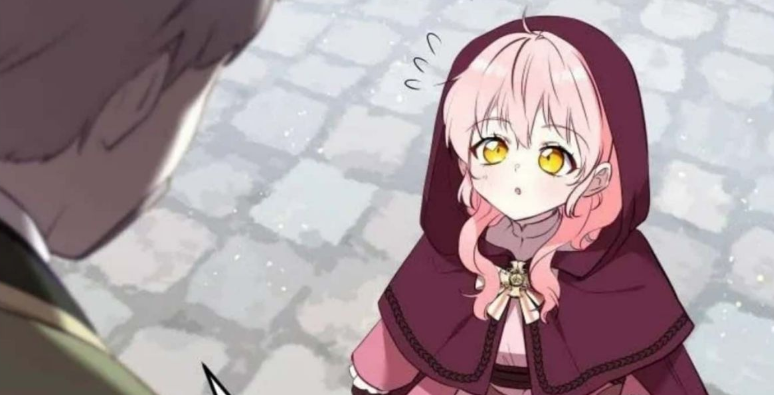Chapter 36 of I’m Being Raised by Villains hits readers with a whirlwind of emotion and action, pushing the narrative into uncharted territory. The chapter unfolds critical moments that redefine the protagonist’s journey, while secrets and power struggles come to the surface.
Up until now, the protagonist has been torn between their desire for freedom and the complicated web of relationships with the villains. Each chapter has peeled back layers of manipulation, loyalty, and survival. As we dive into Chapter 36, we’ll explore the key events that shape this installment, analyze the deepening character arcs, and reflect on the growing themes of power and family dynamics that dominate the storyline.
This article will break down the major plot points of Chapter 36, examine the development of key characters, and explore the themes and symbolism woven throughout. We’ll also discuss how this chapter impacts the overall story, and dive into fan reactions and theories for what’s to come.
Plot Summary of Chapter 36
Major Events
The beginning of the chapter: A tense exchange
Chapter 36 opens with a tense conversation between the protagonist and one of the main villains. This scene quickly establishes the uneasy balance of power at play. The villain reveals more about their plans, but there’s an undercurrent of manipulation. The protagonist, who has begun to grow more assertive, is no longer simply reacting to events—they’re planning their next move. The atmosphere is charged with mistrust as subtle hints of an upcoming conflict linger.
Mid-chapter climax: A betrayal unfolds
The midpoint of the chapter delivers a powerful emotional blow as a key ally of the protagonist seemingly turns on them. This betrayal serves as the heart of the chapter, forcing the protagonist into a position where they must make a life-altering decision. The tension escalates rapidly as this confrontation spirals into an intense standoff. It’s a turning point, both for the protagonist and the supporting characters, as alliances shift and new loyalties are questioned.
A cliffhanger revelation
Chapter 36 ends on a shocking note. Just when it appears that the protagonist has narrowly escaped one danger, a bombshell revelation about their origins drops. This revelation redefines the protagonist’s understanding of their connection to the villains, adding a new layer of complexity to the story. The chapter closes with the protagonist standing at the edge of a new conflict, with their trust shattered and their next steps uncertain.
New Revelations
This chapter uncovers critical information that shakes the foundation of the narrative. A long-buried secret about the protagonist’s family comes to light, changing the dynamics of their relationship with the villains. This twist forces both the protagonist and readers to reconsider everything they thought they knew about the central conflict. The revelation introduces new stakes, hinting at even greater dangers on the horizon.
Character Development
Protagonist’s Growth
In Chapter 36, the protagonist’s growth takes center stage. Early on, they were portrayed as being at the mercy of the villains, often acting passively. Now, their character has evolved into someone who not only questions the motives of those around them but also starts to play the same dangerous game of manipulation. The protagonist is no longer content with simply surviving; they want to regain control of their destiny.
Throughout this chapter, we see the protagonist grappling with intense internal conflict. Their growing self-awareness and realization of their own strength is contrasted by moments of doubt, especially after the betrayal. This emotional depth makes the character more complex, and readers can sense the internal struggle between their innate moral compass and the survivalist instincts the villains have forced upon them.
Villains’ Role
The villains continue to cast a long shadow over the protagonist’s journey, shaping their development. In Chapter 36, the main antagonist reveals more of their motivations, painting them in a slightly different light. Rather than being a purely malevolent force, there are glimpses of a deeper, more personal reason behind their actions. This layer of complexity adds depth to the villain, making them more than just an obstacle to be overcome.
The villains’ manipulations force the protagonist to confront uncomfortable truths. Their methods push the protagonist into situations where they must constantly question who they can trust. In this chapter, the power the villains hold is not just physical, but psychological. Their influence over the protagonist’s mindset is perhaps their greatest weapon, and it continues to evolve in increasingly intricate ways.
Supporting Characters
Several supporting characters play key roles in Chapter 36. A character who has been in the background for much of the story steps forward, revealing their true loyalties—or lack thereof. Their involvement in the betrayal mid-chapter adds an additional emotional layer to the protagonist’s arc, as they must decide whether to forgive or cut ties completely.
Another secondary character serves as the protagonist’s moral compass, providing brief moments of clarity amidst the chaos. However, their influence is diminished as the protagonist begins to carve out their own path, one that may lead them down a darker road. These shifting relationships show how the protagonist is growing beyond the need for constant guidance.
Themes and Symbolism
Main Themes
Power dynamics
Chapter 36 continues to explore the ever-present theme of power. The tension between the protagonist and the villains revolves around control—who holds it, and how it is wielded. As the protagonist grows in confidence, the balance of power begins to shift. This chapter marks a key moment in that shift, as the protagonist starts to push back against the manipulations that have held them captive for so long. However, power in this world is never straightforward, and the protagonist must constantly navigate the precarious line between rebellion and submission.
Family and loyalty
The theme of family is deeply intertwined with loyalty in this series. Chapter 36 puts both themes to the test, particularly with the new revelations about the protagonist’s family. The protagonist is forced to confront the painful reality that family does not necessarily equal trust or loyalty. Their evolving understanding of these relationships adds a layer of emotional complexity to the story, as they must decide who they will stand by in the coming conflicts.
Symbolism
Entrapment and freedom
Symbolism plays a key role in this chapter, particularly in the way the setting and interactions reflect the protagonist’s internal struggle. The physical space—the villain’s grand mansion—represents the protagonist’s sense of entrapment, both emotionally and physically. The mansion’s labyrinthine corridors serve as a metaphor for the protagonist’s mental state, as they navigate their way through deception and half-truths.
Recurring motifs of darkness and light
Darkness and light are used symbolically throughout the chapter, especially during the pivotal moments of confrontation. The chapter opens with the protagonist in a dimly lit room, symbolizing their lack of clarity and power. As the story progresses and revelations come to light, the settings become brighter, signaling the protagonist’s growing awareness and control. However, the chapter’s final cliffhanger, which takes place in a shadowed space, suggests that the protagonist’s journey towards true freedom is far from over.
Chapter 36’s Impact on the Overall Story
Progression of the Storyline
Chapter 36 significantly pushes the story forward by raising the stakes for the protagonist. The new revelations about their family introduce a fresh layer of conflict that will undoubtedly ripple through future chapters. Additionally, the betrayal by a key ally adds tension to the protagonist’s relationships, making the future of these alliances more uncertain. This chapter feels like the setup for the story’s next major arc, and it promises even greater challenges ahead.
Foreshadowing
Throughout the chapter, subtle hints foreshadow future conflicts. Certain conversations and visual cues suggest that the protagonist’s newfound determination to challenge the villains will come with serious consequences. Additionally, there are indications that the protagonist may have to confront painful truths about their family, as well as make hard decisions about who they can trust moving forward.
Fan Reactions and Theories
Reader Response
Fans have been buzzing about Chapter 36. Many have taken to social media to express their shock at the betrayal, while others have praised the emotional depth of the protagonist’s journey. Some readers have speculated that the new family revelations will reshape the story’s focus, potentially introducing new enemies or allies. Others are focused on the growing power struggle between the protagonist and the villains, eager to see where the story goes next. For more information Check this ecopas
Theories About Future Events
One of the most popular fan theories circulating is that the protagonist may end up forming a reluctant alliance with one of the villains, based on the revelations about their family. Another theory suggests that the betrayal in Chapter 36 is part of a larger scheme, and that the character who turned on the protagonist may still be working in their favor. Readers are also speculating about whether the protagonist will eventually rise to challenge the villains directly or if they will continue to struggle within the web of control that has been woven around them.
Personal Reflection and Final Thoughts
Personal Analysis
Chapter 36 is a standout moment in I’m Being Raised by Villains. The emotional intensity of the betrayal, combined with the protagonist’s growing independence, makes for a gripping read. The pacing is well-executed, with the tension building naturally toward the chapter’s explosive conclusion. What sets this chapter apart is the depth of character development, especially for the protagonist, whose internal struggles have become even more relatable and compelling.
Overall Significance
The significance of Chapter 36 lies in its role as a turning point in the series. The protagonist is no longer content to be manipulated, and their growing agency signals a shift in the story’s dynamics. With the new revelations about the protagonist’s family and the evolving power struggles, this chapter sets the stage for major developments in the story’s future, making it a critical piece of the overarching narrative.





